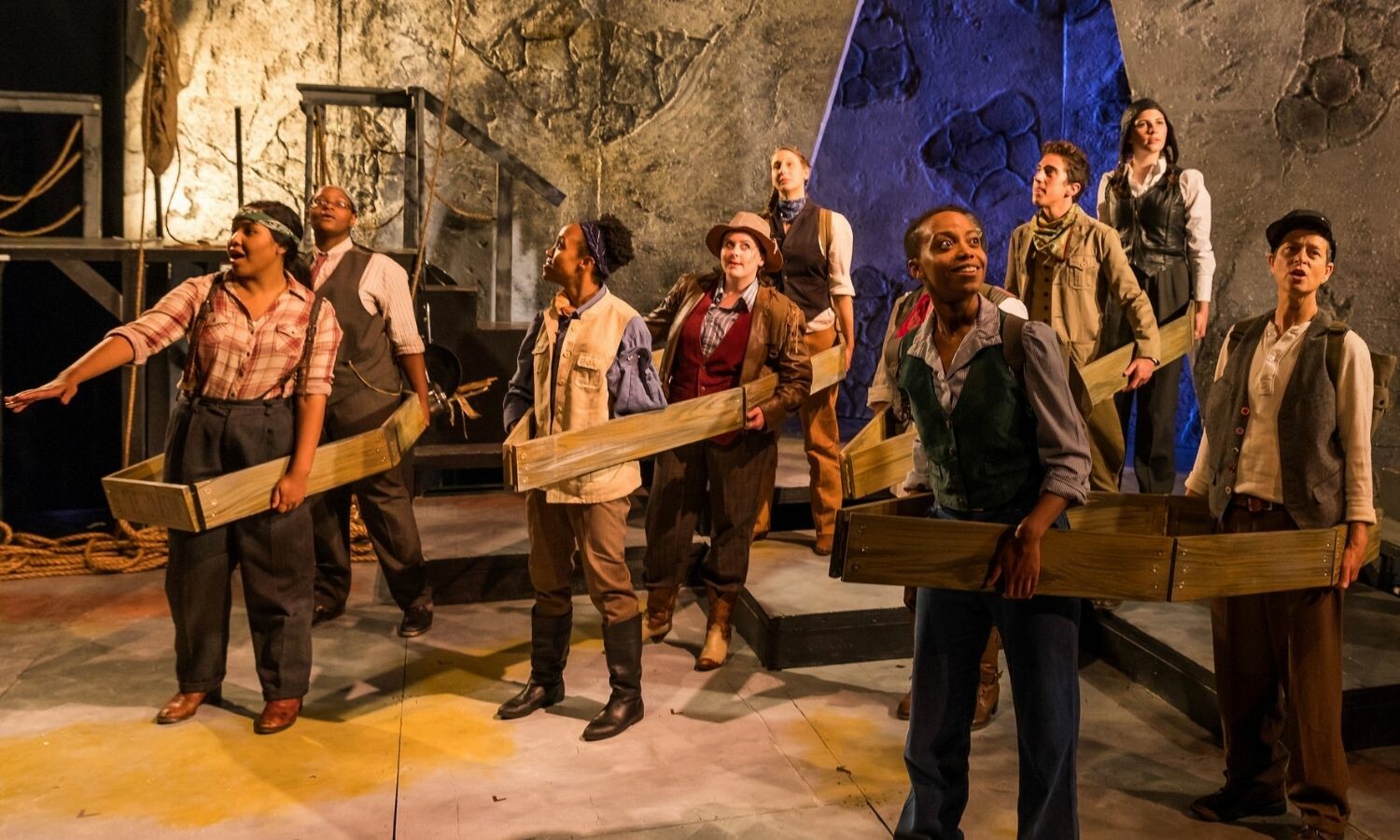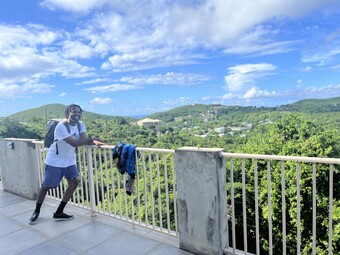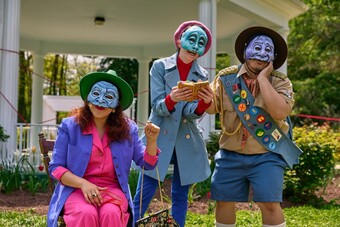We are in a time of upheaval. One of the effects of the George Floyd protests of 2020 was to lay bare how thoroughly white dominance is embedded in our culture and how that pattern must be broken. This led to long-overdue reckonings at many educational institutions that (unwittingly or not) have contributed to racism by mirroring white power structures, holding up Europe as the model for all things, and inherently endorsing the patriarchy in syllabi that have remained little-changed across the decades.
Those in charge are (mostly) not mustache-twirling villains or goose-stepping ideologues, but good people, dedicated educators who thought they were doing the right thing by passing on the same knowledge that had been passed on to them. I know this firsthand, for when I started teaching thirty years ago, my own instinct was to share the readings I had loved best in school; I graded the way my favorite professors graded and very much believed that “the classics” and “the canon” were crucial for a “good” education.
But within a few years, I started to question why I was doing so. When I was a student, I had longed to read work that reflected more of my own life: novels by authors who were Cuban or gay characters in books that weren’t tragic—but, as a teacher, I wasn’t offering my own students that. I began to look more closely at the potent effect of adhering to old norms, how that reinforces harms and fails students. I came to understand that the dominance of whiteness, maleness, and straightness in syllabi and course content sends clear messages about what—and who—is valuable and worthy. When students receive that message (over and over and over), no wonder it filters out into the rest of their worldview, affecting relationships, workspaces, and their sense of national identity.
After I started rewriting my syllabi to include more women and non-white voices, with queer writers and non-American authors appearing more, I heard from some of my students that it mattered, especially to those who had never seen any version of their life experience represented in required reading. Some others didn’t notice at all; the syllabus was just the syllabus. Not everybody loved the new model—one student complained that he didn’t get to read any Hemingway, another groused that the readings were too gay—but not everybody loved all the old texts either. The point wasn’t popularity but vision: I changed the coursework to help all of my students see differently, with a wider lens, whether or not they realized that was what I was doing.
This was a choice and it’s one any educator can (and should) make. It’s the choice to embody active inclusion, by which I mean creating courses that truly take in the world, embracing the gifts of artists, thinkers, and fellow humans as diverse as the planet itself. It means stepping away from familiar modes of teach-these-few-greats-in-this-order, it means remaining humble enough to be a fellow learner, and it means offering course content that allows more students to see themselves not as insiders or outsiders in history, but as active participants in a global conversation happening right how.
Here are eleven steps to make that happen.
It takes time for all of us to expand our reading, broaden our repertoire, and fill our heads with new models, but waiting for perfection to make any progress fails everyone.
1. Start now.
There will be a lot of homework for anyone undertaking this process and it may not all get done at once. But the work shouldn’t be put off until a course is 100 percent where it should be or even till the educator feels comfortable. It takes time for all of us to expand our reading, broaden our repertoire, and fill our heads with new models, but waiting for perfection to make any progress fails everyone.
2. Be humble.
Of course, the biggest stumbling block for so many is not knowing what to replace old content with. Educators who want to do right by their kids may simply not be well versed in work by non-dominant authors. That’s a humbling thing for someone who has literally earned a degree in telling others how much they know, but humility is key in doing this work. If we reframe ourselves not as experts but as learners, we’re ready for the hard work of reading new things, researching what others are doing/teaching, and going beyond ourselves to seek outside help. We must not be afraid to include content in which we are not deeply proficient. We just need to let our students know our limits: yes, we do have some expertise but we don’t know it all, and the course, like life itself, is an investigation of ideas, not a revelation of unquestioned wisdom.
3. Break the spell of gatekeepers.
One of the most common excuses I hear for not changing up a course is that adding new material means cutting out the classics; the fear is that students will miss out if they don’t learn a few works that have long been considered titanic in importance. But where did that importance come from? Most things in the canon were acclaimed by gatekeepers (scholars, critics, directors, heads of institutions) who were very much like their creators. The people with the power to promote work championed the work that was most familiar to their culture and reflective of their taste. It’s time to acknowledge how that narrowed the pool of “important” work and to demystify what counts as great.
When we bring in other work that may not be as famous as, say, Hamlet, we are still bringing work of value from which we may teach specific skills and ideas, which is the actual goal. The larger culture will still provide our students with ample exposure to Hamlet, whereas a class might be the only place they’ve heard of a newer writer. We must be our own gatekeepers, shepherding more inclusive content into the fold, or tear down the gate altogether and let students suggest work to include.
4. Think about and beyond race.
In North America, race must be considered when constructing syllabi; racism is so influential and so corrosive in our culture that not factoring this in counts as a moral failing. There’s no hiding behind “I just chose ‘the best things’” or “I don’t even see color,” the first sentiment suggesting an omnipotence no one possesses and the other revealing a very self-serving delusion that literally makes no sense. So yes, race and ethnicity do need to be considered (along with their mutual friend colorism) when thinking about the creators being privileged in courses. But we can’t stop there.
Gender, too, needs to be looked at. How many women are on the syllabus and are their contributions treated with equal depth and seriousness? Is the focus entirely heteronormative or are there authors offering a queer perspective? Race, ethnicity, gender, and orientation are perhaps the most common baseline elements for inclusion, but there are myriad other points of entry, including indigeneity, gender identity, physical ability, religious practice, and mental health.
If we want to show how comedy has always poked fun at authority figures, we can swap out Shakespeare for the Sanskrit play The Saint-Courtesan (the original Freaky Friday); if we need to demonstrate a Restoration comedy, we could sub in Aphra Behn for John Dryden.
5. Blow past bean counting.
I’ve heard too many teachers grouse about “bean counting,” by which they mean having to add one of this, one of that, one of the other to their existing very white, very male syllabi. I have two reactions to this: First, it’s only bean counting if you resent being asked to do it; educationally, the actual function of these changes is to deepen the course. Second, “bean counting” falls far short of what really needs to be done, which is to change the syllabi so much that work by non-white and non-male artists is dominant, not just added on.
To me, that would achieve not mere equality but equity. Equality means tailoring offerings to mirror the current demographics (a step that would, in fact, be a vast improvement for many teachers). Equity means tipping the balance of offerings so that those who have been underrepresented in course content have a chance to make as big an impression on students as those who have dominated curricula for so long. For non-dominant identities (for instance, Indigenous or gender nonconforming artists) to achieve the same amount of visibility as dominant identity groups, they may require greater real estate on the syllabus than their relative percentage of the population merits. Providing that amplification is good for the course—which becomes rounder—and for students, whose vision will be expanded.











Comments
The article is just the start of the conversation—we want to know what you think about this subject, too! HowlRound is a space for knowledge-sharing, and we welcome spirited, thoughtful, and on-topic dialogue. Find our full comments policy here